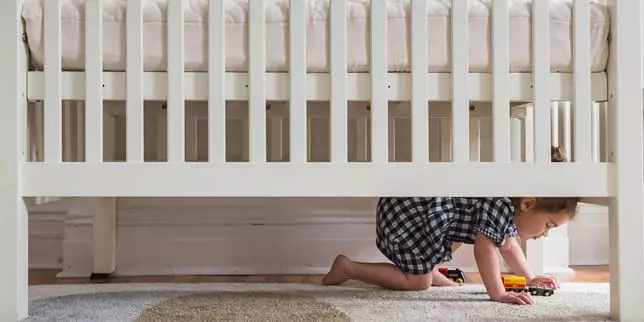As children transition from infancy to the toddler stage, parents often encounter a myriad of developmental milestones, one of the most significant being the switch from crib to toddler bed. It’s a moment steeped in relief, excitement, and anxiety, which leaves many parents questioning if they are making the right choice. Here, we’ll explore critical factors influencing this decision, highlighting potential pitfalls and strategic approaches to ensure a more seamless transition for both parents and children.
One of the most contentious points regarding this transition is age. Many parents assume that the moment their toddler turns three, they should automatically move up to a larger bed. However, numerous experts argue that age alone is not a definitive indicator of readiness. Children mature at different rates. Frequently, toddlers under the age of three may not yet possess the emotional or psychological readiness needed for such a change. They often find security and comfort in the confines of their cribs. By removing that foundational sense of safety prematurely, parents may unwittingly create anxiety that can manifest in disrupted sleep patterns.
Parents should observe their child’s overall development and comfort levels. For some toddlers, the comfort of their crib may still outweigh the idea of a bigger bed. It is essential to take a step back and evaluate if placing them in a toddler bed aligns with their needs or if waiting a little longer could produce better results.
Transitioning to a toddler bed is often considered a fresh start; however, if a child already grapples with sleep issues—like insomnia, frequent waking, or bedtime anxieties—shifting to a new bed may exacerbate these predicaments. If your little one has trouble sleeping through the night in their crib, the thought of moving to a bed might only confuse their sleeping patterns further.
Prioritize addressing these sleep issues beforehand. Consider working on your toddler’s sleep routine: setting a consistent bedtime, creating an engaging and calming pre-sleep environment, and establishing firm rules around sleep can not only improve their ability to sleep well but also increase their readiness for the big bed transition.
Many parents mistakenly feel societal pressure to transition their toddler into a bed. In truth, if your child is happy, comfortable, and sleeps soundly in their crib, it may be wise to delay the big switch. Instead of being driven by age, respond to your child’s specific needs. If they express a desire to remain in the crib and are still within the weight and height restrictions, there’s no urgent need to rush this change. Remember, the ultimate goal is a well-rested child, not necessarily a toddler bed.
Another significant factor to consider is your child’s physical capabilities. As toddlers develop motor skills, they may begin to climb out of their crib, presenting a genuine safety hazard. However, transitioning to a toddler bed may not solve the problem but rather enhance it. Instead of making the switch hastily, parents can address this behavior first.
Solutions might include reintroducing a sleep sack that can make climbing out difficult or implementing a reward system to reinforce staying in bed. More importantly, maintaining the security provided by the crib until they are physically and emotionally ready can prevent unnecessary risks.
If your toddler has been testing boundaries during the day, this behavior can carry over into bedtime routines. Setting clear and consistent boundaries during both day and night is pivotal. Implementing a toddler clock that visually signals when it’s appropriate to be awake or asleep can help them understand these rules better.
Patience and consistency are essential during this stage. Parents should prepare for challenges as they reinforce these limits, remembering that a toddler bed will require them to establish new expectations around bedtime clearly.
If you’ve already transitioned your child to a toddler bed and are facing difficulties, it’s not the end of the world. If circumstances allow, revisit the safety and comfort of the crib. Sometimes children need the reassurance of those four walls to settle down. For families juggling multiple children, consider using a travel crib as an interim solution.
Ultimately, each transition’s success hinges on thorough consideration of these red flags. If none of these factors resonate with you, and your child seems ready for the change, go ahead! Plan ahead, set boundaries, and be gentle during the process. The key is to make the transition a positive experience rather than a stressful one, fostering independence in your little one while ensuring they remain secure and comfortable.

